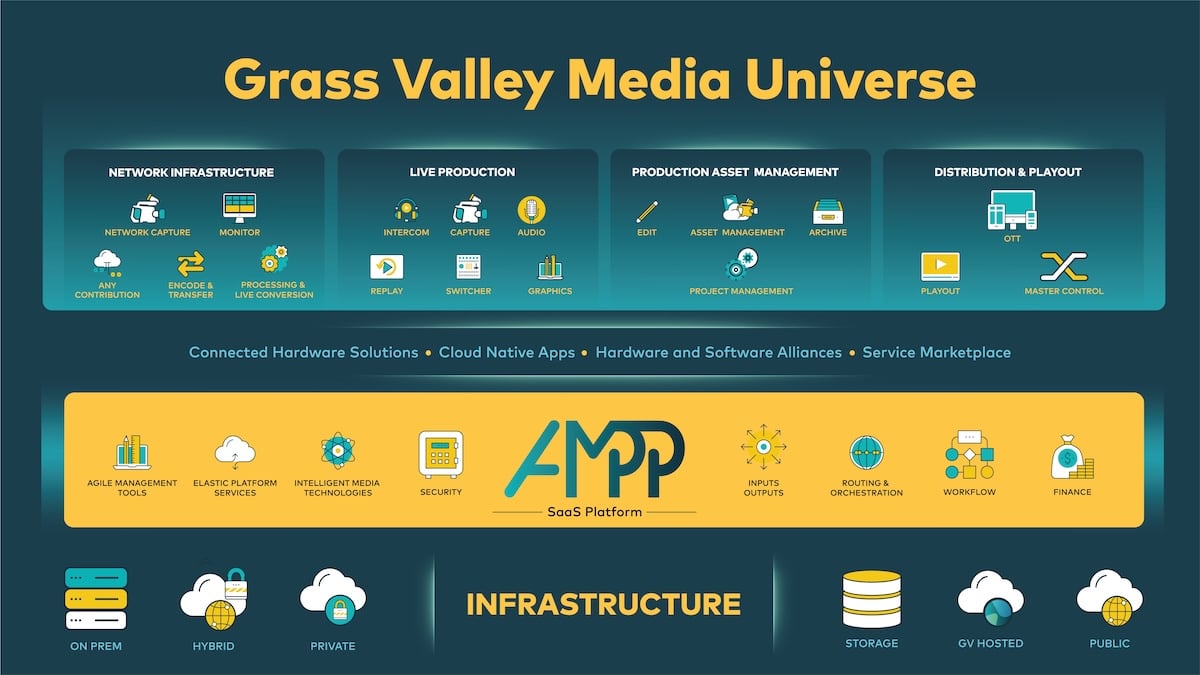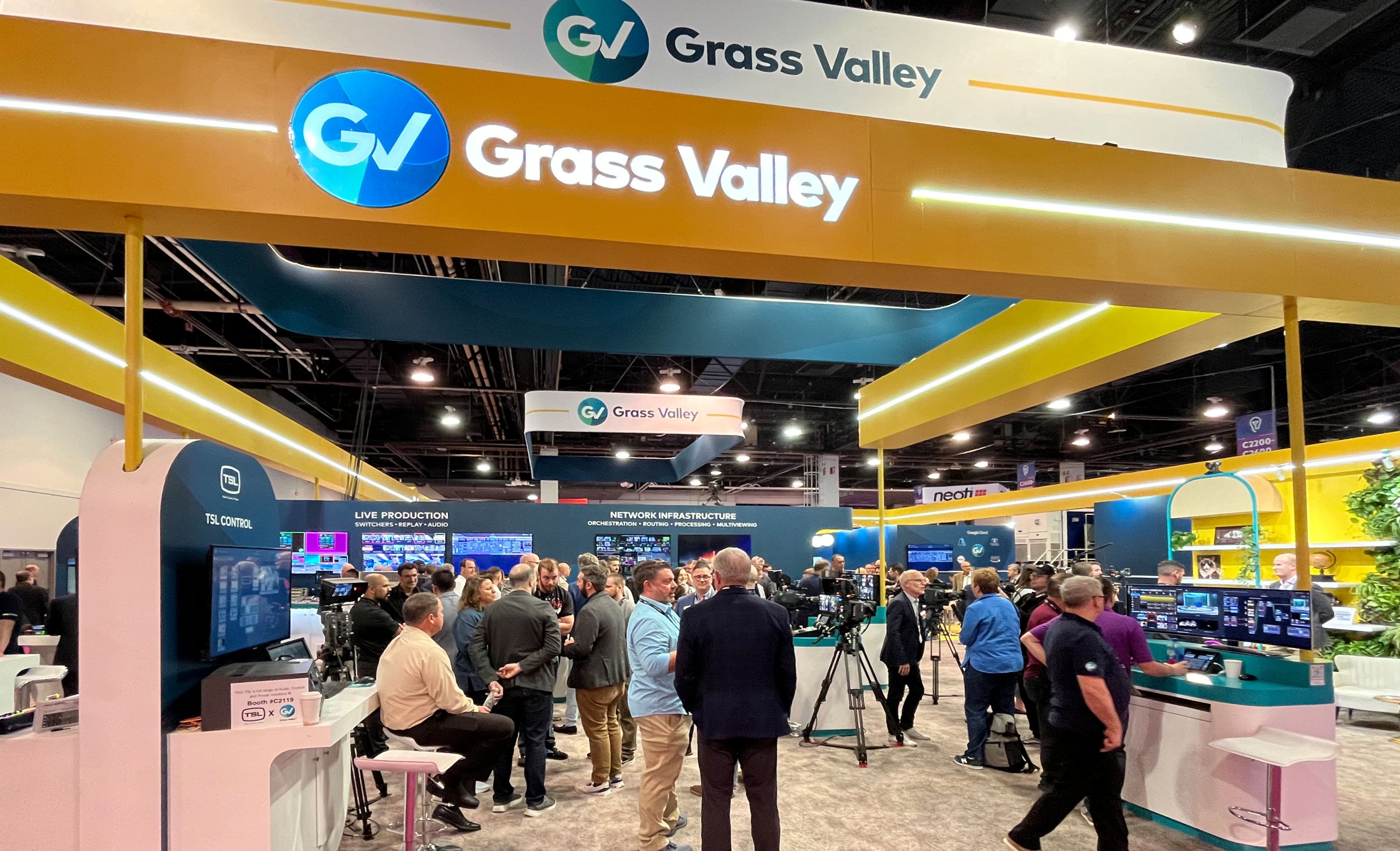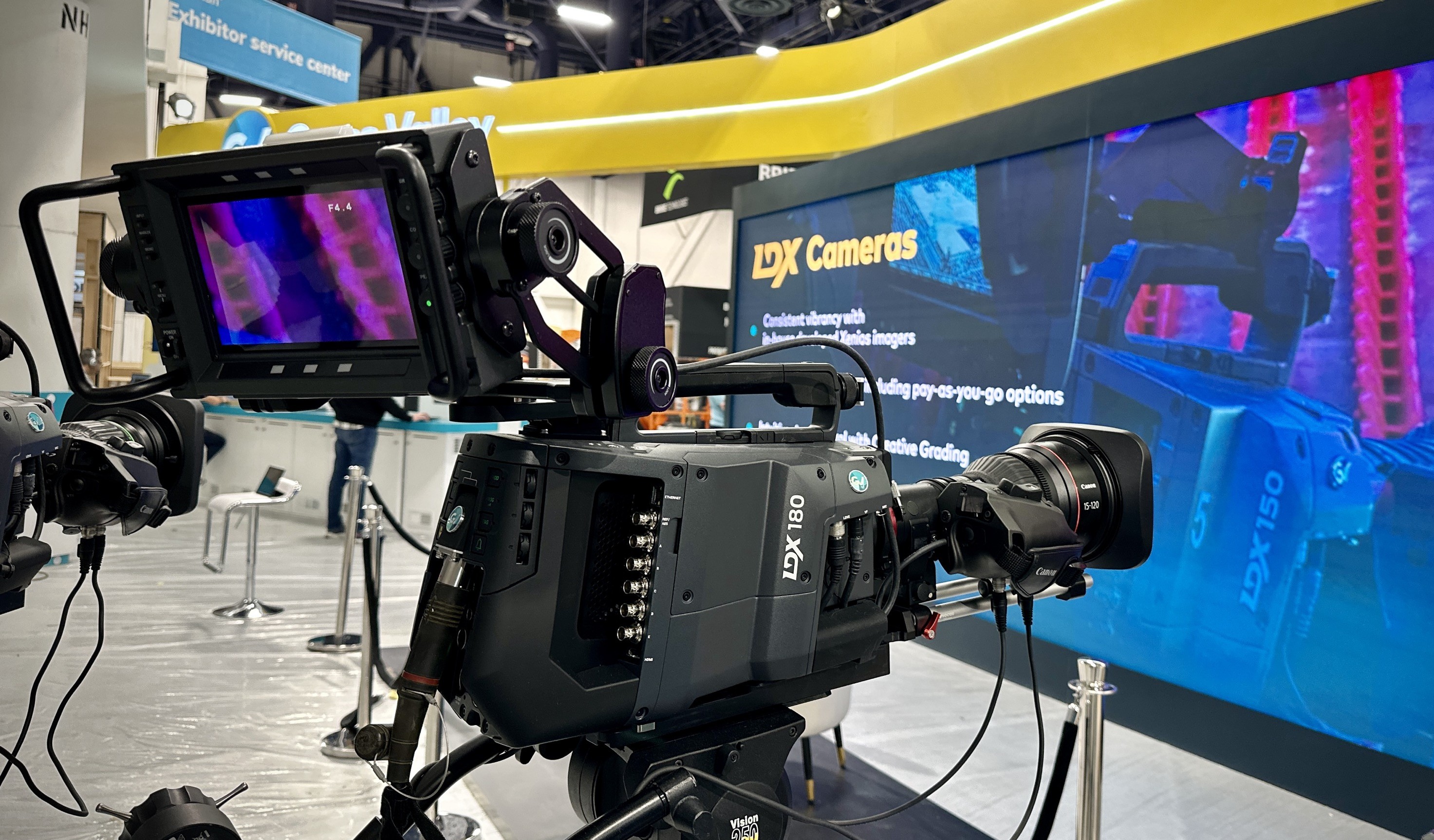Grass Valley's New CEO Discusses Company's Financial Health, AMPP's Increasing Role in Live Production
Jon Wilson: ‘We’re in an incredibly strong position now’

Anyone familiar with the history of Grass Valley over the past decade or so knows about the challenges the company has faced, particularly when it came to ownership. After changing hands from Francisco Partners in 2010 to Belden in 2014 and then to Dragon Capital in 2020, the company went through several CEOs before Louis Hernandez, Jr., president of Dragon, took the helm in 2021. Throughout that time, the company's owners continued to make acquisitions; its most significant, the acquisition of Miranda in 2012 and SAM (formerly Snell & Wilcox) in 2018. Both companies were merged into Grass Valley.
Those acquisitions have made Grass Valley a powerhouse presence in the live TV production market and as the company has transitioned over the past few years to new leadership, it’s also taken stock of its product portfolio and honed its approach to address a rapidly growing and changing marketplace, fueled by advances in IP and cloud.
Hernandez always indicated that his leadership at Grass would serve as a transition to new leadership and in late 2023, Jon Wilson, former president and COO of Telestream was appointed to lead the company as its new President and Chief Operating Officer, and today was announced as the company’s new CEO.
Wilson is leading a team that includes CTO Ian Fletcher, CRO Tim Banks, CFO Michael Prinn and CPO Adam Marshall, as well as several new members, including Claudio Szabas, as Executive Vice President, Customer Success, Chris Partington, Product Director, Content & Editing and Vincent Eade Regional Sales Director for Northern Europe.
'A lot of difficult decisions needed to be made'
In a recent interview with TV Tech, Wilson talked about the company’s work to tie its hardware-based solutions, like its traditional switcher, routing and processing and camera technology, with more of a cloud-based IP approach, with an emphasis on live production.
“We're in an incredibly strong position now,” Wilson said, referring to the company’s tech portfolio and financial status. "When I joined the business, it was coming out of a major transformation."
“When Louis bought the business in 2020, the business hadn't been fully integrated across many of the acquisitions and it needed new ownership horizons,” he added. “A lot of difficult decisions needed to be made in terms of rationalizing the portfolio, rationalizing the footprint and getting to a place where we had a business that was financially viable.”
Get the TV Tech Newsletter
The professional video industry's #1 source for news, trends and product and tech information. Sign up below.
It’s important to note that the transformation occurred during a pandemic, which added a whole new layer of complexity.
“The pandemic exacerbated the challenge that Grass Valley needed to get through and overcome to get to the other side of that transformation,” Wilson said. “Covid really made it even more difficult, and most notably, all the supply chain challenges, right? Our team dealt with millions of dollars that needed to be paid to secure those final components, to get a finished product shipped out to a customer. I've never seen that in my career and I hope we never have to experience that again.”
Despite these challenges, Grass Valley’s financial health improved significantly in 2024, with a 25% increase in bookings and a 70% rise in camera sales. The company says it has stabilized its supply chain, reducing delayed shipments and improving lead times to 2-4 weeks.
AMPP has been central to our growth. It's core and we see it as central to the future of Grass Valley,”
Jon Wilson
“Nearly every product across our portfolio is at normal lead times, two to four weeks across nearly all of our portfolio,” Wilson said. “And in some cases, it's a competitive advantage for us now because of the financial health of the business, we're actually able to anticipate customer demand, build inventory in advance if and as we need to.”
In early 2024, the company closed a $220 million financing deal with Morgan Stanley, a key step in stabilizing the company’s balance sheet.
“It's allowed us to invest not just in our inventory, but also in our service and support stock, and get our SLAs also back up to what our customers expect and what we've committed to them as well,” Wilson said. “So it's just been a fundamental transformation of the business, really, over the last 12 to 18 months.”
Powering Up with AMPP
When it comes to transforming the company’s tech portfolio, perhaps no other technology over the past five years has had more impact than AMPP (Agile Media Processing Platform), Grass Valley’s software platform designed to facilitate flexible and efficient media production workflows.

“AMPP has been central to our growth. It's core and we see it as central to the future of Grass Valley,” Wilson said.
Comparing it to an operating system for media, Wilson adds that “it's about the entire ecosystem of products that we've built at Grass Valley.”
“AAMP is core to certain applications like play-out, asset management and our frame-like product, where we've taken traditional Grass Valley technology and stood that up in AAMP as standalone applications,” Wilson said adding that “Grass Valley is still going to lead the industry in camera technology, switcher technology and in infrastructure products, and we've been reinvesting across the entire portfolio.
“But what's driving a lot of the growth is customers see the broader strategy of what we've built in the Grass Valley Media Universe and having an on ramp, whether they're ready to go to a cloud native architecture today, which could be, by the way, on prem,” Wilson said.
NAB Show Plans
For the 2025 NAB Show, April 6-9 in Las Vegas, the company will be located in the North Hall, booth N506 of the Las Vegas Convention Center, and will offer a refreshing new look and layout to fully demonstrate the integrated GVMU ecosystem that covers every stage of the production workflow, from image capture to delivery, the company said.

Making its debut at NAB Show is the new LDX 180 camera which features the new Super35 Xenios imager that delivers stunning cinematic depth-of-field, with enhanced definition and vibrancy.
Featuring all of the hallmarks of the LDX Series, including Creative Grading, ensuring artistic control across the lineup, the LDX 180 blends cinematic depth with the speed and precision of live production to redefine how stories are told. The full LDX Series will be on display, including the new LDX 110 with RF for wireless production, and the new LDX 135 with 5G, offering direct AMPP contribution without ingest conversion.

The new Grass Valley booth will also offer a showcase of the full GVMU, with products and solutions covering cameras and live production; networking and processing; news and media workflows; content management and editing; linear and event-based playout; and more. The booth will also host members of the expanding GV Alliance, which brings together companies from across the media and entertainment industries in an open digital community with the shared goal of simplifying production workflows.
What About AI?
With artificial intelligence on the minds of many NAB Show visitors, Wilson says the company is getting feedback from its customers and will only adopt AI when appropriate.
"I'm not ready to say AI is going to be central to our strategy going forward, but it will be a core part of our strategy, because increasingly it's top of mind for our customers and accelerating in the discussions that we're having with them," Wilson said.
"There's a number of different applications and we can go a lot of different directions but we need to be intelligent about how we leverage and deploy AI for our customers,” he added. “And as we think about where they can benefit most, we know we can't do everything. So I don't have a specific answer today, other than it's going to be core to the strategy but needs to have practical applications for our customers."
Tariff Impacts
With its manufacturing base in Canada just outside of Montreal, Wilson is well aware of the impact of tariffs. Although President Trump has threatened Canada with tariffs primarily on automobiles, Canada and Mexico were exempt from tariffs announced on April 2, largely due to the existing trade agreement between the countries (CUSMA).
Nevertheless, tariffs have been a frequent topic of conversation with customers in recent months, Wilson said. (Note: this interview was done prior to Trump’s announcement).
“If tariffs do come into effect, we will be impacted, and that will require us to have to raise prices on selected products,” he said. “I've already been having those conversations with customers proactively. It's just unfortunate, and I think what's most unfortunate—and I think you hear this across the board—ultimately, it's just going to get pushed down to our customers in the end.”
We're not implementing our normal annual price increases, but we will, as tariffs do come into effect, have to increase prices to some extent, to mitigate the impact of the tariffs."
Jon Wilson
Furthermore, the company won’t make any quick moves based on the tariffs from President Trump, who claims that they will result in a “Golden Age” of manufacturing for the U.S. One such decision would be to move their manufacturing to the states.
“That's not a viable option for Grass Valley,” Wilson said. “And why do I say that? Number one, we're committed to delivering the highest quality products in the industry, and I'm not going to make a snap decision to try to assemble our products, or move our manufacturing to the U.S. for that short term.”
Wilson notes that Grass Valley, of course, is not alone in this situation.
“We told our customers we're not implementing our normal annual price increases, but we will, as tariffs do come into effect, have to increase prices to some extent, to mitigate the impact of the tariffs,” he said. “And I wish we were in a position to not have to pass that on, but I would expect across the industry—that we're all going to have to pass the impact of this on.”
Over the past year, as Wilson has transitioned to leading the company full-time, he also notes that Louis Hernandez Jr. is not stepping back completely.
“This transition is the result of Louis having a tremendous amount of confidence in not just myself, but the leadership team that he's put in place over the last couple years—that we've got the right team in place to take Grass Valley forward through the next phase,” Wilson said.
Tom has covered the broadcast technology market for the past 25 years, including three years handling member communications for the National Association of Broadcasters followed by a year as editor of Video Technology News and DTV Business executive newsletters for Phillips Publishing. In 1999 he launched digitalbroadcasting.com for internet B2B portal Verticalnet. He is also a charter member of the CTA's Academy of Digital TV Pioneers. Since 2001, he has been editor-in-chief of TV Tech (www.tvtech.com), the leading source of news and information on broadcast and related media technology and is a frequent contributor and moderator to the brand’s Tech Leadership events.

